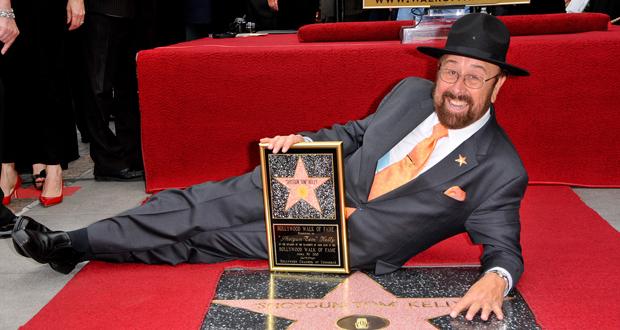San Diego CA— The Pacific Southwest Railway Museum Association (PSRM), a San Diego-area historical and educational nonprofit, will mark the 100-year anniversary of the completion of the San Diego & Arizona Railway (SD&A) by hosting its SD&A Centennial Gala Dinner starting at 6 p.m., Friday, Nov. 1, at the John D. Spreckels Center, 1019 7th St., Coronado.
The public is invited to attend the nonprofit’s fundraiser. Tickets are priced at $100 per person. For more information and to RSVP, visit www.psrm.org/centennial.
Keynote speaker will be Tom Irwin, radio broadcasting legend known as “Shotgun Tom Kelly,” who has worked in radio and TV for 51 years and was honored with his own star on the iconic Hollywood Walk of Fame in 2013. Irwin, 70, known for his Smokey Bear-style ranger hat, is currently the host of “60s on 6,” heard on SiriusXM from 4 to 9 p.m. Pacific Time, on Mondays, Tuesdays, Thursdays and Fridays.
Irwin, a San Diego resident, also is an enthusiastic train aficionado. Nearly every Wednesday, Irwin can be found running his model trains on the tracks at the San Diego Model Railroad Museum in San Diego’s Balboa Park. Irwin’s late father, John G. Irwin Sr., enjoyed a 45-year career with Santa Fe Railroad. Irwin Sr., an engineer and air brake expert, was selected as the train engineer who transported President Harry Truman from Los Angeles to San Diego on a whistle-stop tour in 1948.

A San Diego native, Irwin created his own mock station at age 10 in his bedroom using two record players and a microphone. While still attending Mt. Miguel High School in Spring Valley, he served as an intern at KDEO-AM in 1965, and later launched his first on-air gig on Sunday mornings on KPRI 106.5-FM in 1966. He graduated from high school in 1968, and worked in San Diego, Merced, Oxnard and Bakersfield before joining KGB 1360-AM, known at the time as “Boss Radio,” at age 21.
By 1970, he had adopted Kelly as his radio name. The “Shotgun” nickname came from his dad because young Tom preferred riding in the front seat of the family car next to his dad rather than the back seat. He adopted the forest ranger hat because he liked Smokey the Bear and camping as a child.
He worked at several San Diego radio stations, including KPRI, KGB, KFMB, KCBQ and KBZT (K-BEST 95) before spending 22 years in Los Angeles as afternoon host at top-rated KRTH-FM (K-Earth 101) in Los Angeles. Irwin thought he had retired in 2015, but Lou Simon, senior music director at SiriusXM, kept asking him to return to the airwaves, which he did starting in August 2018.
In San Diego television history, Irwin hosted two children’s shows, including “Words-A-Poppin,” a nationally syndicated, word-driven kids game show (1974-1979) that gave him two Emmy awards, and the “KUSI Kids Club,” which aired for 12 years.
For the past year, PSRM has been celebrating the centennial completion of the SD&A. Stretching 148 miles from San Diego to El Centro, including 44 miles in Mexico, the construction of the SD&A was financed by San Diego entrepreneur and philanthropist John D. Spreckels at a cost of $18 million, or roughly $123,000 per mile. On Nov. 15, 1919 in Carrizo Gorge, Spreckels himself drove the final “golden spike.”
On display at the Gala Dinner will be the actual gold spike, the original, gold-plated spike that was used 100 years ago by Spreckels. In addition, actors dressed in period clothing will pose as Mr. Spreckels and other dignitaries and civic leaders from 1919.
The Gala Dinner also will include comments from PSRM leadership, elected officials, government officials from Baja California, contemporary railroad executives and Spreckels family members.
The Gala Dinner also will include reciting of speeches delivered on Nov. 15, 1919, when community leaders and railroad executives hailed the expected contributions of the SD&A to the local economy and other factors that would improve the status of San Diego and Imperial Counties and northern Baja, Mexico.
As the final link in the nation’s transcontinental railroad system, the SD&A established a direct rail link from San Diego to the east by connecting with the Southern Pacific Railroad in El Centro. Previously, San Diegans had to travel north to Los Angeles to connect with an east-bound train. Today, parts of the railway are currently active with freight trains on both sides of the border.
The SD&A rail line, which took 12 years to complete, was called the “Impossible Railroad” by engineers of its day due to the immense logistical challenges, which included extreme terrain requiring 2.5 miles of bridges and trestles and 21 tunnels, extending 11 miles through the treacherous Carrizo Gorge, an area where cliffs dropped more than 1,000 feet to the bottom (17 of the 21 tunnels were located in Carrizo Gorge). Additional construction challenges included floods, landslides, fires, hot weather, deaths from the flu, sabotage by Mexican revolutionaries and various delays caused by World War I.
PSRM, an non-profit, all-volunteer educational organization dedicated to preserving the heritage of railroading in the Southwest, operates the 140-acre Campo Railroad Park and Museum in Campo, Calif., where every weekend the public can enjoy vintage train rides aboard full-size, restored locomotives and train cars from the early 20th century, along with the Southwest Railway Library and more than 120 pieces of historical railroad equipment and artifacts on display. For more information on PSRM, visit www.psrm.org.
Radio Legend Shotgun Tom Kelly, Train Enthusiast, is Keynote Speaker at Train Nonprofit Fundraising Dinner – November 1
October 25, 2019




